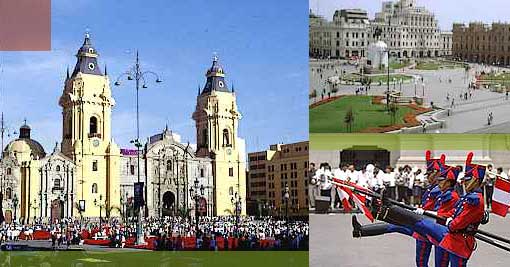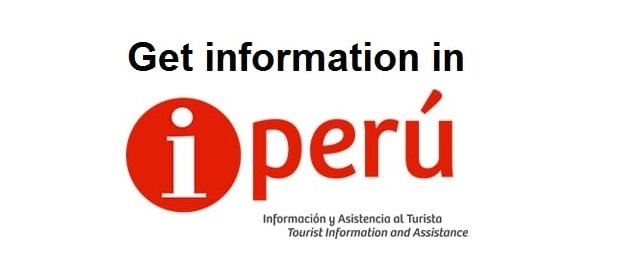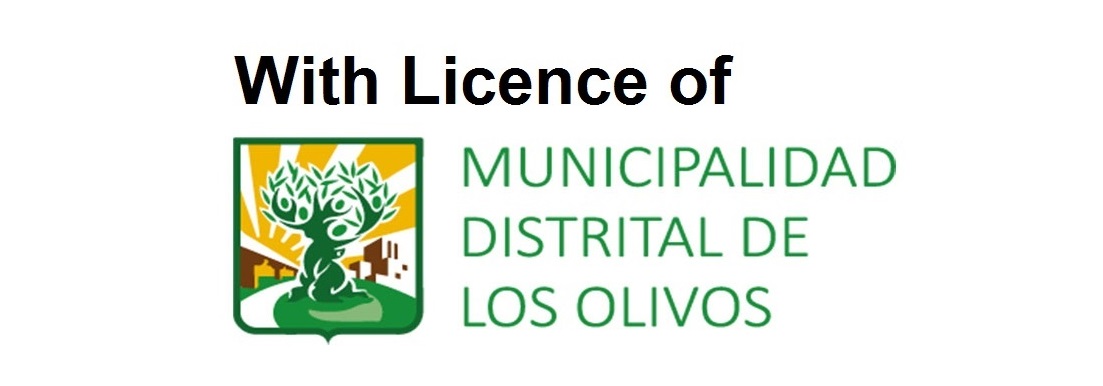

MAIN DESTINIES
LIMA
 It is located in the river of the Pacific Ocean, in the central occidental side of Peru, capital of the country and the department of Lima at the edge of the river Rimac between the Pacific Ocean and the Andes, on the arid zone of the region. LimaIt is the biggest city of the country. It has the Colonial side in churches and mansions like the Plaza Mayor or Plaza Principal, The Government Palace, the Municipality, the "Palacio de Torre Tagle". Numerous colonial from Lima are jewelry of the Ibero-American architecture like the Cathedral of Lima.
It is located in the river of the Pacific Ocean, in the central occidental side of Peru, capital of the country and the department of Lima at the edge of the river Rimac between the Pacific Ocean and the Andes, on the arid zone of the region. LimaIt is the biggest city of the country. It has the Colonial side in churches and mansions like the Plaza Mayor or Plaza Principal, The Government Palace, the Municipality, the "Palacio de Torre Tagle". Numerous colonial from Lima are jewelry of the Ibero-American architecture like the Cathedral of Lima.
Weather
Even thought Peru it is on a tropical zone its weather is diverse, with moderate temperatures by the cold current of Humboldt and the drizzle that covers the coast during winter time from May to October.
History
Lima was founded in 1535 by the Spanish conquerors (including Francisco Pizarro now a controversial figure) and originally was called City of the Kings. Lima replaced Cuzco as the capital of the Spanish Government in the colonial time of Peru, and it quickly become one of the richest Spanish places in the new World. After the independence in 1826, Lima was the capital of Peru. During the Pacific War with Chile in 1879, Lima was looted and occupied by the Chilean Army since 1881 up to 1883. Chorrillos, a suburb was put into fire by the Chileans. After that, there was a quick industrialization and in 1940 there was also a great increase of the population of the city.
Important Places
The Plaza Mayor is in the center of Lima, it is where the population came together during the colony, making no difference of race or religion. The colonial court, public functionaries, aristocracy women, "the tapada", the lottery seller, the monk and of course, the others sellers on the street called "ambulantes". The Cathedral (built in 1746), The Government Palace, which is guarded by "Los Húsares de Junín". Many constructions of XVI and XVII centuries like San Francisco de Asís's Church that survived the earthquake of 1746. The "Plaza de toros de Acho" (1764, restored in 1945) is placed to the north of Rimac
River, in another suburb called Rimac. The "Universidad Nacional de San Marcos" (1551), the "Universidad Nacional Agraria"
(1902), the "Universidad Nacional de Ingeniería" (1896), and many others which are the best universities are in the
metropolitan area. There are also art, history, archeology and philately museums are also of interested.

Other building that have to be visited which is located in downtown, just beside the other side of the San Francisco de Asis's Church is "The House of Pilatos" or "La casa de Pilatos". It is the most ancient building in Lima that is up to now in excellent conditions. Nowadays the Tribunal Constitutional works on this place. You have to make previous reservations to visit it.
Transportation
Taxis
There are all over the country and the tariffs are convenient. They do not have taximeter, it is common to ask for a lower price with the driver before getting in on it. For 10 soles, approximately 3 dollars you can go to a further zone.
Buses
This other way of transportation. 50 cents of 1 dollar (1.50 nuevos soles) you may go from Cieneguilla to La Perla (Callao Port) in Lima.
Moto Taxis
This other alternative of some suburbs zones like San Miguel and Cieneguilla.
Airlines
Many airlines fly directly to Lima from different parts of North America, Europe and Latin America. Please check our Reservation Department.
Callao is the main port of Peru. It is placed at 13 km (approximately at 8 miles) to the west from Lima. Other important suburbs (districts) include the residential areas of San Isidro, Monterrico, Jesús María, San Borja, and the famous beaches of Miraflores and Barranco. Border towns called before "barriadas" have emerged on the nearby of residential areas. Oil Barrels, mats and other materials are used on the construction of poor houses to accommodate the constant growing of the population that come to Lima from rural areas looking for a better future.













